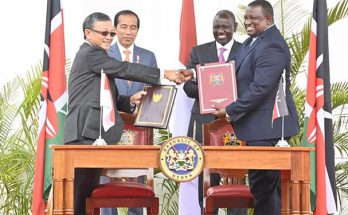 What does the global consumer and African youth (age 15-24) markets have in common? Everything, the African youth market is increasingly representative of the new global consumer class, in fact.
What does the global consumer and African youth (age 15-24) markets have in common? Everything, the African youth market is increasingly representative of the new global consumer class, in fact.
Africa as a region has the fastest growing population globally. This population will surpass India’s and China’s population as soon as 2025.
Currently, a large portion of Africa’s population is under 15. Even though the Global-African consumer group is still emerging, this youth “bulge” is getting ready to mature. These youth will be full-fledged citizens and challengers. We see evidence of them as citizens and challengers of the status quo with the political upheavals in North Africa. There are even minor movements in Senegal , Uganda, and other countries in Sub-Saharan Africa. Many see these upheavals rooted in politics, but in actuality, this is a shift in societies caused by a younger generation rising up – politically, socially, and economically.
While African youth have unique identities attributed to the continent’s history, heritage, culture, identity, and social structures, there is little indication that, at a basic level, they are inherently different from other youth globally. How could this be?
The African youth of today are exposed to new and different experiences. Technology is one medium through which youth become exposed. As more and more youth are able to connect with anyone anywhere through the web and phones, they begin to have new experiences which can change how they think of themselves and others, as well as their expectations and behaviors.
Another avenue for exposure for African youth is through migration to other countries for school, work, etc. While some may remain in foreign countries for most of their adult lives, today’s youth (turned adult) often retain strong connections with their home countries, which may indirectly influence culture in their homelands. Some of these youth become young adults who are transmigrants – people who have become part of at least two national cultures and regularly cross-migrate between the countries. They serve as bridges between the cultures and develop social and business ties that bring two worlds together.
But as youth become citizens with rights, privileges, and responsibilities and challengers to the status quo, they also become increasingly important consumers. Many of the influences affecting them socially and politically will also affect how they consume. In a paper by Richard Kahn and Douglas Keller entitled, “Global Youth Culture,” these influences are described as, “global and local, as well as homogenizing and diversifying, influences (which) continuously merge in the lifestyles, performances, and sociopolitical practices of contemporary youth.” So, today’s youth will develop unique identities that will reflect local and global, as well as diverse and homogenous influences to which they are exposed. This also means that the individual identities of youth are as complex as the societies around them.
This presents quite a conundrum for businesses. How in the world do you drive your business model around individual identity versus mass consumption?
The first step is to understand what this new age of identity means. In the article, “The Age of Identity and the Facebook Generation,” I described the Age of Identity as:
This is a new consumer paradigm. We are seeing the beginning of the Age of Identity. Consumers better understand their unique identities and what they value these days. They prioritize based on what allows them to live out their unique identities.
The principle drivers of identity-focused consumers can still be understood in the context of Maslow’s Hierarchy of Needs. Maslow says that needs drive individual motivation. Needs start with survival issues around food, water, and shelter. As people develop and move up the socioeconomic scale, their needs change from needs to connect with family and friends to self-esteem found through education and career. The final levels of actualization and transcendence speak to people achieving mental and spiritual acuity. In other words, people become attuned to their unique identities and personalities.
The difference in the consumer markets moving forward is that an increasingly larger number of consumers will not prioritize based on needs indicating lack, e.g., self-esteem, safety, relationships.
They will focus on needs that allow them to fully live out their identities. As the old saying goes: “To thine own self be true.”
For African youth, this identity process does not mean a subjugation, or elimination, of their family and local culture. It means a new identity, which is unique to the individual but synergizing many different influences.
I was recently asked if local brands would push out global brands in Africa as the natural inclination is to identify with something that is African. While this can be a factor, the dominate driver will still be, “Does the brand help me live my life as I choose? Does it resonate with who I perceive myself to be or want to be?” Where African brands have competitive advantage is they initially should understand their African markets and in being African they help build the image and identity of Africa on the continent and around the globe. They can maintain this momentum by delivering on the mandate presented to them by African youth consumers.
For youth, having a voice as individuals and in groups is very important. So, the second step is to listen to and act on the voices of youth, or the voice of the customer. This means market research, as well as communicating and engaging with African youth.
Until now, this was a difficult feat for businesses that did not have on-the-ground representatives, which is still one of the best approaches to reaching customers. With technology, however, businesses can get input and feedback from youth almost in real time in Africa, particularly in urban areas.
Companies like EXP Digi in South Africa and Bongo Live in Tanzania are using mobile and Internet technologies to develop fast, reliable, more affordable market research solutions focused on youth and young adults. As examples, EXP was able to identify which brands (e.g., Nike) youth in South Africa most recognized from an SMS survey. And, Bongo Live can tell you that about 57% of young adults (21-30) in Tanzania are interested in promotions about electronics,computers, and mobiles while only about 22% are interested in promotions about hardware and equipment. In both instances, data can be available within days instead of weeks or months.
Companies also need to be adept at finding trends from distributed “voices” on the Internet. Being able to collect and analyze data from the web and social networks is key.
The third step is being able to identify and act upon emerging patterns you find as you listen to the youth. This is a whole new paradigm for business intelligence. We are no longer responding to, but anticipating the next evolution in our consumer markets.
As a final note, this new Global-African Youth consumer market will require new business models. The shifts our societies are experiencing are also changing the way in which business models need to be designed. Businesses can no longer focus on developing a product to meet requirements of the masses. One thing they need to figure out how is how to deliver configurations that fit the individual, but at a price point that fits the African market.
All of this points to big challenges for businesses in the African markets, but well-executed opportunities will far outweigh the challenges.



